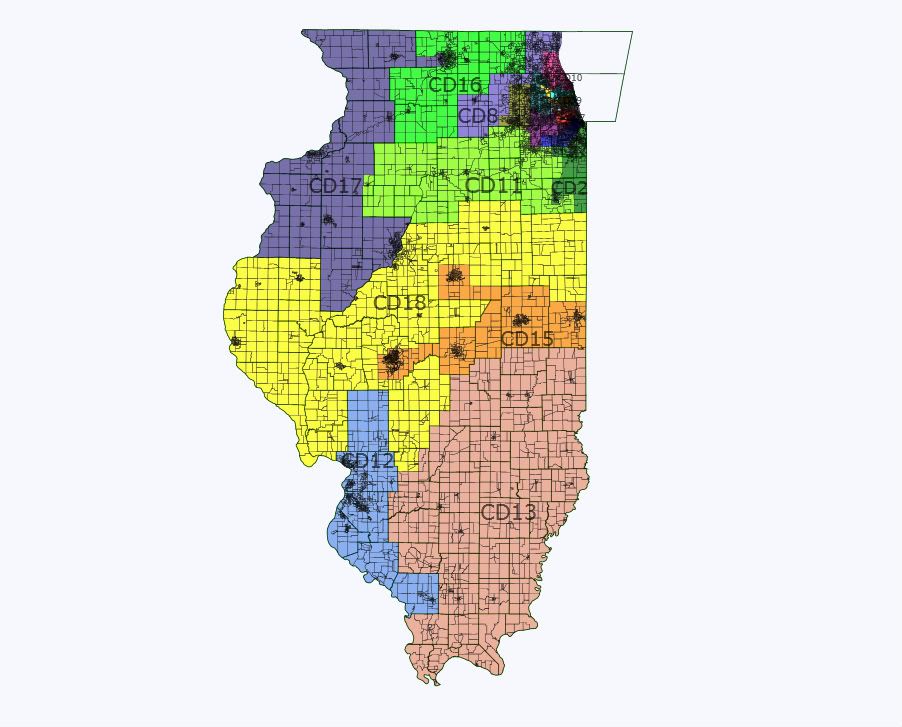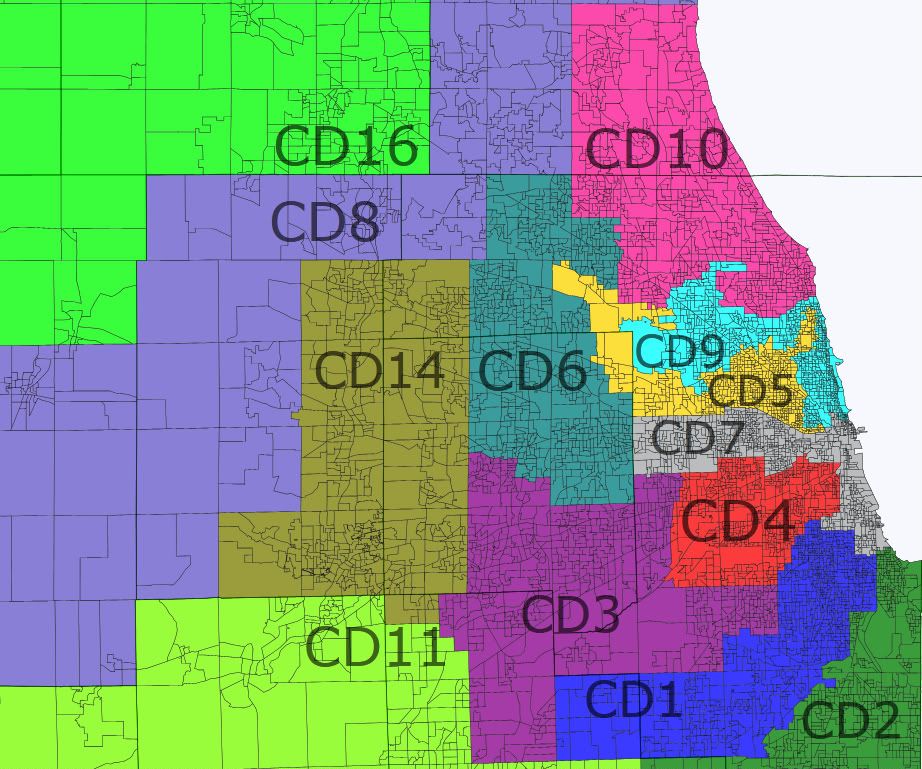District 1 (Boundary County and Sandpoint)
2004: Bush 61.1%, Kerry 36.9%
2008: McCain 56.9%, Obama 40%
Senator Sean Keough (R), Representative Eric Anderson (R), Representative George Eskridge (R)
District 2 (Shoshone County, Benewah County and part of Bonner County)
2004: Bush 62.6%, Kerry 35.7%
2008: McCain 59.3%, Obama 37.4%
Senator Joyce Broadsword (R), Representative Shannon McMillan (R), Representative R.J. Hardwood (R)
District 3 (Coeur d’ Alene’s suburbs, exurbia and rural areas, also my district!)
2004: Bush 71.3%, Kerry 27.3%
2008: McCain 67.7%, Obama 30.0%
Senator Steve Vick (R), Representative Vito Barbieri (R), Representative Phil Hart (R)
District 4 (Coeur d’ Alene)
2004: Bush 59%, Kerry 39.4%
2008: McCain 53.3%, Obama 44.2%
Senator John Goedde (R), Representative Marge Chadderdon (R), Representative Kathleen Sims (R)
District 5 (more suburbia except it’s a Spokane oriented one called Post Falls)
2004: Bush 69%, Kerry 29.2%
2008: McCain 64.9%, Obama 32.6%
Senator Jim Hammond (R), Representative Bob Nonini (R), Representative Frank Henderson (R)
District 6 (Latah County: home of the University of Idaho and nothing else besides a few sheep fucking peasants)
2004: Bush 49.5%, Kerry 48.0%
2008: Obama 51.3%, McCain 44.6%
Senator Dan Schmidt (D), Representative Tom Trail (R), Representative Shirley Ringo (D)
District 7 (Lewiston, a few small towns and a Nez Pearce reservation)
2004: Bush 62.2%, Kerry 36.6%
2008: McCain 58.1%, Obama 40.0%
Senator Joe Stenger (R), Representative Jeff Nessett (R), Representative John Rusche (D)
District 8 (Clearwater County, Lewis County, Idaho County and Valley County. Known for vast expanses of nothing)
2004: Bush 70.3%, Kerry 27.3%
2008: McCain 65.1%, Obama 31.8%
Senator Sheryl Nuxoll (R), Representative Ken A. Roberts (R), Representative Paul Shepard (R)
District 9 (Adams, Washington and Payette. No idea what exists here besides a Payette Lake)
2004: Bush 75.3%, Kerry 23.5%
2008: McCain 69.1%, Obama 28.4%
Senator Monty Pearce (R), Lawrence Denney (R), Judy Boyle (R)
District 10 (Boise’s exurbs and suburbs)
2004: Bush 72.1%, Kerry 26.6%
2008: McCain 61.9%, Obama 35.8%
Senator John McGee (R), Representative Pat Taskugi (R), Darrell Bolz (R)
District 11 (Boise’s exurbs and farmland)
2004: Bush 76.9%, Kerry 21.7%
2008: McCain 71.6%, Obama 25.8%
Senator Melissa Snyder (R), Representative Steven Thayn (R), Representative Carlos Bilbao (R)
District 12 (Nampa)
2004: Bush 72.5%, Kerry 26.5%
2008: McCain 61.5%, Obama 36%
Senator Curtis McKenzie (R), Representative Robert Shaffer (R), Representative Melissa Robinson (R)
District 13 (Boise suburbs)
2004: Bush 76.2%, Kerry 22.5%
2008: McCain 69.6%, Obama 29.9%
Senator Patti Longe (R), Representative Brent Crane (R), Representative Christy Perry (R)
District 14 (Eagle and parts of Meridian)
2008: McCain 62.8%, Obama 35.5%
Senator Chuck Winder (R), Representative Mike Moyle (R), Representative Reed DeMourdant (R)
District 15 (Meridian)
2004: Bush 64.0%, Kerry 34.8%
2008: McCain 53.0%, Obama 44.8%
Senator John C Andreason (R), Representative Lynn Luker (R), Representative Max Black (R)
District 16 (West Boise)
2004: Bush 55.2%, Kerry 43.5%
2008: Obama 53.0%, McCain 44.5%
Senator Les Bock (D), Representative Grant Burgoyne (D), Representative Elfreda Higgins (D)
District 17 (Boise Bench)
2004: Bush 50.1%, Kerry 46.7%
2008: Obama 56.6%, McCain 40.1%
Senator Eliott Werk (D), Representative Bill Killen (D), Representative Sue Chew (D)
District 18 (South Boise/Boise State University)
2004: Bush 54.7%, Kerry 46.8%
2008: Obama 52.7%, McCain 45.1%
Senator Mitch Toryanski (R), Representative Julie Ellsworth (R), Representative Phyllis King (D)
District 19 (Boise’s Northend which is basically Idaho’s mini Boulder, Colorado)
2004: Kerry 60.5%, Bush 37.8%
2008: Obama 67.9%, McCain 29.9%
Senator Nicole LeFavour (D), Representative Cherie Buckner-Webb (D), Brian Cronin (D)
District 20 (Meridian)
2004: Bush 74%, Kerry 25.1%
2008: McCain 62.7%, Obama 34.9%
Senator Shirley McKague (R), Representative Joe Palmer (R), Representative Marve Hagedorn (R)
District 21 (Kuna, Bill Sali’s old district)
2004: Bush 73.6%, Kerry 26.5%
2008: McCain 63.5%, Obama 34.2%
Senator Russel Fulcher (R), Representative John Woude (R), Representative Clifford Bayer (R)
District 22 (Mountain Home and Boise County)
2004: Bush 78.3%, Kerry 20.3%
2008: McCain 66.3%, Obama 31.3%
Senator Tim Corder (R), Representative Rich Wills (R), Representative Pete Neilsen (R)
District 23 (Owhyee and the Magic Valley)
2004: Bush 76.7%, Kerry 22.0%
2008: McCain 70.1%, Obama 27.9%
Senator Brett Bracket (R), Representative Jim Patrick (R), Representative Stephen Hartgen (R)
District 24 (Twin Falls)
2004: Bush 73.4%, Kerry 25.4%
2008: McCain 66.0%, Obama 31.4%
Senator Lee Heider (R), Representative Leon Smith (R), Representative Sharon Block (R)
District 25 (Sun Valley)
2004: Bush 54.8%, Kerry 43.8%
2008: Obama 49.6%, McCain 48.0%
Senator Jim Donoval (R), Representative Michael Stennet (D), Representative Wendy Jaquet (D)
District 26 (Jerome County, Minidoka County)
2004: Bush 79.6%, Kerry 19.4%
2008: McCain 72.6%, Obama 24.9%
Senator Dean Cameron (R), Representative Joan Stevenson (R), Representative Maxine Bell (R)
District 27 (Cassia, Oneida and Power counties)
2004: Bush 80.8%, Kerry 17.8%
2008: McCain 75.8%, Obama 21.6%
Senator Denton Darrington (R), Representative Scott Bedke (R), Representative Fred Wood (R)
District 28 (Bingham County)
2004: Bush 76.7%, Kerry 21.9%
2008: McCain 71.2%, Obama 25.8%
Senator Steven Blair (R), Representative Dennis Lake (R), Representative Jim Marriott (R)
District 29 (parts of Pocatello and Chubbuck)
2004: Bush 63.0%, Kerry 35.8%
2008: McCain 56.5%, Obama 41.0%
Senator Diane Bilyeu (D), Ken Andrus (R), Jim Guthrie (R)
District 30 (Pocatello, Idaho State University)
2004: Bush 57.3%, Kerry 41.1%
2008: McCain 48.6%, Obama 48.2%
Senator Edgar Malepai (D), Representative Roy Lacey (D), Representative Elaine Smith (D)
District 31 (Bear Lake, Franklin, Caribou Bonneville and Teton counties)
2004: Bush 80.9%, Kerry 17.8%
2008: McCain 73.9%, Obama 23.0%
Senator Robert Geddes (R), Representative Marc Gibbs (R), Representative Tom Loerstcher (R)
District 32 (Bonneville County)
2004: Bush 80.6%, Kerry 18.2%
2008: McCain 72.6%, Obama 23.4%
Senator Dean Mortimer (R), Representative Janice McGeachin (R), Representative Erik Simpson (R)
District 33 (Idaho Falls)
2004: Bush 71.2%, Kerry 27.5%
2008: McCain 61.9%, Obama 35.4%
Senator Bart Davis (R), Representative Jeff Thompson (R), Representative Linden Bateman (R)
District 34 (BYU-Idaho/Rexburg)
2004: Bush 90.7%, Kerry 8.1%
2008: McCain 84.0%, Obama 13.7%
Senator Brent Hill (R), Representative Mack Shirley (R), Representative Dell Raybould (R)
I skipped district 35. Here’s a map of the districts: http://legislature.idaho.gov/a… I’ll have an explanation diary coming up with a crash course on Idaho politics for the n00bs.



